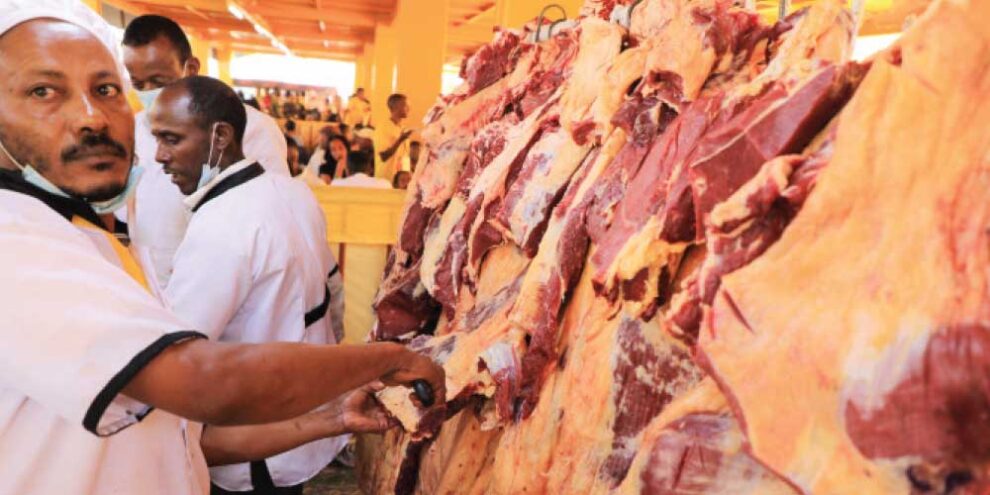Ethiopian Meat Producers ‘-Exporters’ Association (EMPEA) has set a target of earning USD 135 million by exporting 25,607 tons of meat products in the current fiscal year. However, achieving this goal remains challenging due to a combination of factors, including rising domestic prices, livestock smuggling, and underutilized export slaughterhouses.
The meat industry has faced a decline in revenue, partly attributed to domestic price hikes. The General Secretary of EMPEA, Ato Abebaw Mekonen, noted that Ethiopia’s recent peace and stability have contributed to these price increases, making meat less affordable for many consumers. On the other hand, the illicit trade of livestock has severely impacted the meat sector, diverting valuable resources from legitimate businesses. This illegal activity has also undermined the quality of meat products destined for export.
Ethiopia currently has 11 export slaughterhouses, with two operated by foreign investors and the rest by local investors. However, these facilities are operating far below their capacity while they are capable of producing and processing up to 200,000 tons of meat annually for the global market. The main destinations for Ethiopian meat and related products are UAE, Qatar, Oman, and Saudi Arabia. The country is working to penetrate Chinese and other viable markets by improving the quality of meat and dairy products.
Ethiopia ranks sixth in the world in livestock resources. Studies show that it has the potential to export 200 thousand tons of meat per year. A National Red Meat Strategy which was formulated to increase red meat production and export, enhance the red meat markets, and develop the productivity of feed industries was launched in November 2022.
Source : 2merkato.com











